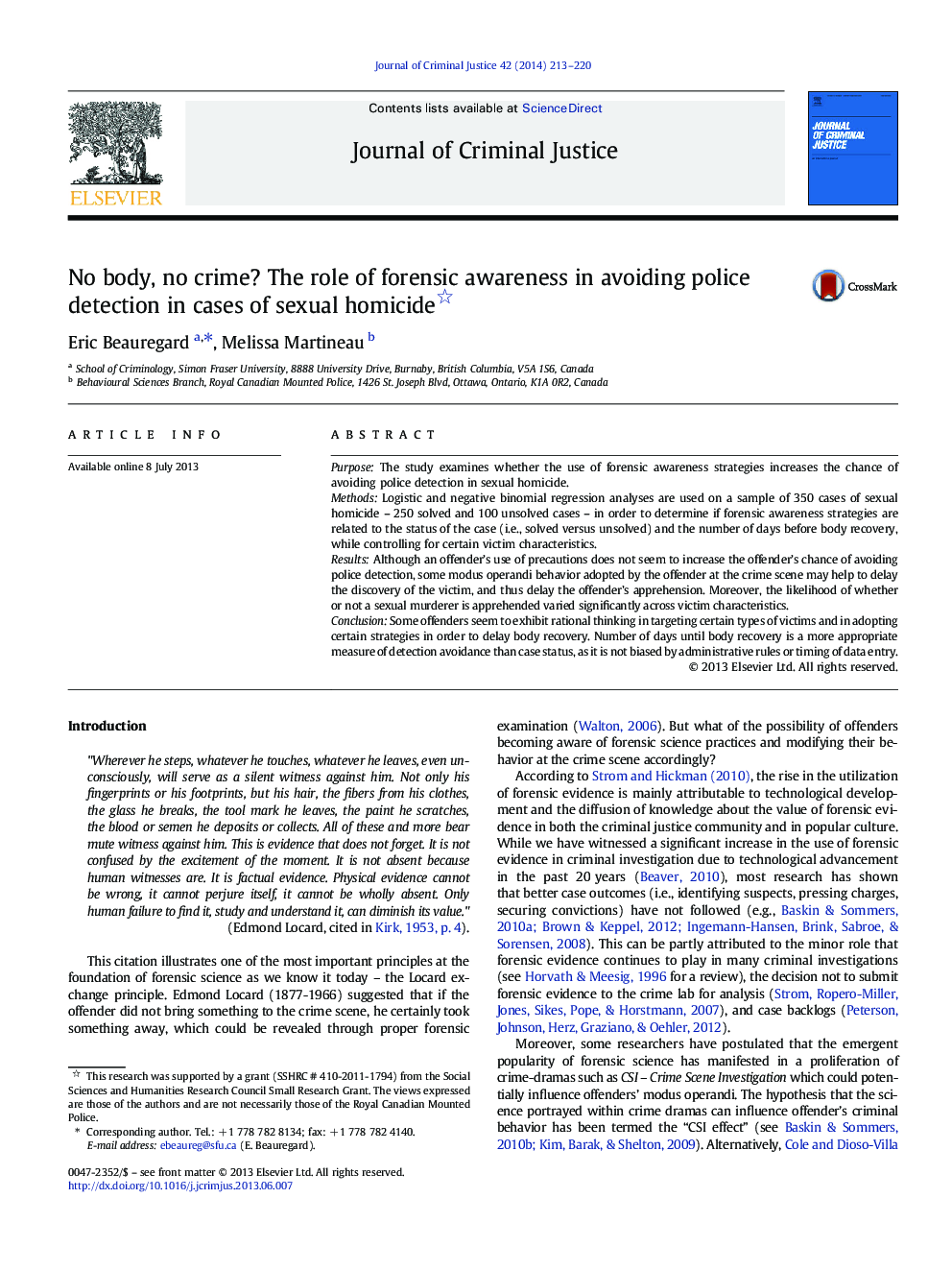| Article ID | Journal | Published Year | Pages | File Type |
|---|---|---|---|---|
| 882813 | Journal of Criminal Justice | 2014 | 8 Pages |
•Victim characteristics are related to sexual murderers’ police detection;•Use of precautions does not increase the offender’s chance of avoiding detection;•Offenders’ modus operandi help to delay the discovery of the victim;•Offenders exhibit rational thinking in order to delay body recovery;•Number of days until body recovery is a better measure of detection avoidance;
PurposeThe study examines whether the use of forensic awareness strategies increases the chance of avoiding police detection in sexual homicide.MethodsLogistic and negative binomial regression analyses are used on a sample of 350 cases of sexual homicide – 250 solved and 100 unsolved cases – in order to determine if forensic awareness strategies are related to the status of the case (i.e., solved versus unsolved) and the number of days before body recovery, while controlling for certain victim characteristics.ResultsAlthough an offender’s use of precautions does not seem to increase the offender’s chance of avoiding police detection, some modus operandi behavior adopted by the offender at the crime scene may help to delay the discovery of the victim, and thus delay the offender’s apprehension. Moreover, the likelihood of whether or not a sexual murderer is apprehended varied significantly across victim characteristics.ConclusionSome offenders seem to exhibit rational thinking in targeting certain types of victims and in adopting certain strategies in order to delay body recovery. Number of days until body recovery is a more appropriate measure of detection avoidance than case status, as it is not biased by administrative rules or timing of data entry.
